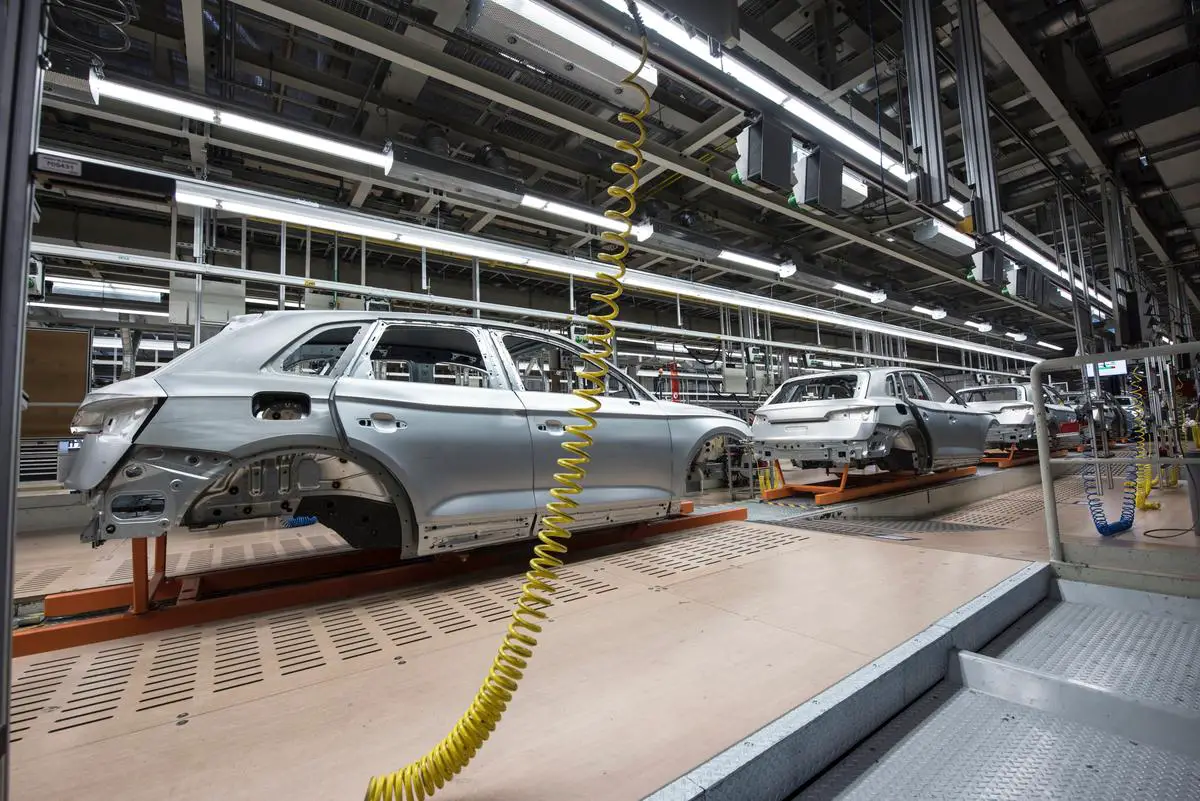Understanding the Impact of AI on Automotive Safety
Our journey through technological progression is indeed a fascinating one, with the advent of Artificial Intelligence (AI), shaping various industries with unprecedented advancements. The automotive industry is no exception, harnessing the power of AI to implement revolutionary changes. From autonomous vehicles to sophisticated safety features, AI’s influence is undeniably profound. This exploration into the realm of AI in automotive safety chronicles AI’s transformative role, primarily focusing on autonomous vehicles, advanced driver-assistance systems (ADAS), and the outlook for future innovations. As we delve into the article, we harness a better understanding of AI’s pivotal role in revolutionizing vehicular safety.
Concept of AI in the Automotive Industry
Understanding Artificial Intelligence in the Automotive Industry
Artificial Intelligence (AI) is the simulation of human intelligence processes through machines, primarily computers. These processes include the capacity for learning, reasoning, problem-solving, perception, and language understanding. In the automotive industry, AI converges with data analysis, predictive analytics, and cognitive computing to usher in a new era of vehicles that can virtually “think” and function autonomously.
AI and Vehicular Innovations
In recent years, the automotive industry has honed in on the potential and applications of AI and has started integrating it into vehicle technology. AI-powered systems are not only reinventing the driving experience but also playing a vital role in improving vehicle safety. AI technology is used in various ways, starting from manufacturing automobiles, designing self-driving cars, predictive maintenance, to many infotainment systems found in most cars today.
Role of AI in Automotive Safety
AI’s contribution to automotive safety is most evident in autonomous vehicles or self-driving cars. These vehicles are equipped with AI systems that enable the vehicle to sense its environment and make decisions to move without human intervention. The AI-driven systems use a combination of sensors, cameras, radars, and data to detect obstacles, read road signs and signals, follow traffic rules, and avoid collisions. Furthermore, these systems can adapt to different driving conditions, like rain, snow, or heavy traffic, optimizing vehicle safety in varying situations.
Predictive Analysis and AI
AI plays a significant role in predictive analysis to enhance automotive safety. AI-driven predictive analytics can foresee potential issues before they become problems, alerting the driver or automatically correcting discrepancies, thereby enhancing vehicular safety. For instance, it could predict when a part, like a brake pad or battery, is about to fail and replace it to avert any undesired incidents.
AI and Enhanced Safety Features
Many safety features integrated into modern vehicles are direct results of AI technology. For example, brake assist, electronic stability control, blind-spot detection, and lane departure warnings are all facilitated by AI algorithms. Some vehicles can now even detect pedestrian movements and automatically engage brakes if a risk of collision is detected.
Impact of AI in Accident Prevention
AI technology’s potential in accident prevention has been widely recognized. Many newer cars have AI-enabled safety features designed specifically for accident prevention. Features like automatic emergency braking, adaptive cruise control, and lane-keeping assist are all AI algorithms designed to prevent accidents. They continuously monitor the vehicle’s surroundings, make split-second decisions that humans may not be capable of, ultimately preventing accidents, and enhancing overall road safety.
Artificial Intelligence (AI) has risen to be an integral part of the automotive safety systems, revolutionizing the ways we commute and leaving a profound impact on the future of the transportation sector.

Photo by carlosaranda on Unsplash
AI in Autonomous Vehicles
The Interplay of AI and Autonomous Vehicles
With the advent of AI, a breakthrough has been made in the realm of autonomous vehicles. Employing a myriad of technologies and complex algorithms, AI equips these self-operated vehicles to have an understanding and awareness of their surroundings. This gives them the ability to carry out intricate tasks quite similar to a human driver’s role.
Role of AI in Sensor Technology
A critical component of autonomous vehicle function is sensor technology. Autonomous cars are equipped with various sensors, including lidar, radar, GPS, and computer vision technologies. These sensors generate colossal volumes of data per second that must be processed rapidly and reliably to ensure safe operation. AI systems take this influx of information and generate an accurate real-time depiction of the surrounding environment. They then use this understanding to make sense of what they’re seeing, identifying other vehicles, pedestrians, road signs, and many other crucial pieces of information.
AI in Navigation
When it comes to navigation, the role of AI in autonomous vehicles is equally important. Autonomous cars rely on machine learning algorithms and GPS data to plot routes and destinations. Using AI, these cars can adapt to different driving conditions, adjust routes based on current traffic patterns, or even find the best possible route to a destination. AI also helps to predict the behavior of other drivers on the road, enabling the autonomous vehicle to adjust accordingly and engage in safer driving practices.
AI in Decision Making
At the heart of any autonomous vehicle lies AI-based decision-making processes, also known as decision engineering. This process determines how an autonomous car responds in different scenarios. Based on data from various on-board sensors and current traffic conditions, the AI system makes critical decisions such as when to speed up, slow down, switch lanes, or even stop completely. Essentially, AI allows the self-driving car to mimic human judgement during driving, enabling independent operation without human intervention.
AI and Enhanced Safety Features
AI in autonomous vehicles does not only focus on the usual driving tasks but also significantly contributes to enhanced safety. Predictive AI technologies are being developed to anticipate and diagnose automotive problems in advance, reducing the likelihood of mechanical failures that could lead to road accidents. Meanwhile, AI algorithms can also fine-tune safety features such as automatic braking and collision avoidance systems, thus offering an extra layer of security for passengers.
In the same vein, AI can assist in ensuring safety by interpreting and reacting to varying road conditions, such as weather changes or poor road surfaces. It can also detect driver fatigue and inattention, issuing alerts or taking over control as necessary. Further, AI-backed driver monitoring systems can also aid in improving overall road safety by identifying poor driving habits and suggesting corrections.
Summing Up
Artificial intelligence (AI) exerts an expansive and complex role in the evolution and safety configurations of self-driving cars. This is achieved by putting into operation AI programs in areas like sensor technologies, navigation, decision-making, and superior safety features. As a result, autonomous cars are being fashioned to function more competently and safely than ever before.

AI and Advanced Driver-Assistance Systems (ADAS)
AI’s Contribution to Advanced Driver-Assistance Systems (ADAS): Elevating Vehicle Safety
Artificial Intelligence has made crucial contributions to automobile safety through its application in Advanced Driver-Assistance Systems (ADAS). These systems consist of various interconnected sub-systems that work mutually to augment vehicle safety and enhance the overarching driving experience.
Automatic Braking
A notable aspect of ADAS is automatic braking. This system employs AI technology and sensors to scan the road for potential obstacles. When an imminent collision is detected, the system triggers an automatic braking mechanism to avoid the accident or mitigate the impact. This innovative use of AI in ADAS has been a crucial factor in reducing front-to-rear crashes.
Collision Detection
Moreover, collision detection is another important facet of ADAS backed by AI. This feature works by using AI algorithms to analyze data from built-in cameras and sensors, enabling the vehicle to sense any potential hazards, objects, or pedestrians in its trajectory. In case of any potential collision, the system alerts the driver and can automatically initiate measures to avoid it. This minimizes the risk of collisions and significantly improves road safety.
Lane Departure Warnings
Furthermore, ADAS systems heavily utilize AI in providing lane departure warnings to drivers. This system uses cameras to continually track lane markings and the vehicle’s relative position on the road. When an unintended lane deviation is detected, AI algorithms analyze this data and trigger visual, auditory, or tactile warnings to warn the driver. Some systems are advanced enough to employ automatic steering or braking intervention to help guide the vehicle back into its lane, thereby preventing potential accidents caused by inattentive or distracted driving.
Enhanced Navigation
To enhance navigation, ADAS systems integrate AI technology with Global Positioning System (GPS) mapping and vehicle-to-vehicle (V2V) communication. This allows the vehicle to anticipate road conditions up ahead, such as turning curves, traffic congestions, or sudden changes in speed. Using this information, the system can automatically adjust the vehicle’s speed or suggest alternate routes to the driver, thereby improving fuel efficiency and reducing travel time, in addition to enhancing safety.
Conclusion
In conclusion, AI ingegration into Advanced Driver-Assistance Systems (ADAS) has played a vital role in enhancing car safety measures. The continuous evolutions and advancements in AI technology promise to bring even more innovative features to automobile safety, turning traditional driving practices on their head.

Benefits and Challenges of AI in Automotive Safety
AI’s Role in Enhancing Automotive Safety
The role of Artificial Intelligence (AI) in automotive safety is nothing short of significant. One of AI’s noteworthy results within this industry is the substantial increase in safety measures. AI helps mitigate the risk of accidents greatly and drives progress in making our roads safer. Cars equipped with AI systems can process data in real-time from various sensors or cameras to spot pedestrians, cyclists, and other possible danger points.
AI also benefits in sharpening reaction times. Unlike human drivers, who can be affected by fatigue or distraction, AI-based systems maintain constant alertness. Cars run by AI respond much quicker than those driven by humans, markedly reducing accident probabilities.
The use of predictive algorithms allows AI systems to issue warnings based on anticipated actions of others on the road. AI-powered vehicles can evaluate and react to numerous variables like road conditions, traffic density, weather, and more. Predicting the most sensible action based on these variables contributes to improved safety for both drivers and pedestrians alike.
Challenges of AI in Automotive Safety
Despite the manifold benefits, several challenges accompany the implementation of AI in automotive safety. One of the major issues is the matter of data privacy. AI systems rely heavily on data collection to function optimally. Therefore, the question arises about how this data is stored and used, and whether it infringes on individual privacy.
The heavy reliance of AI on technology also makes it vulnerable to failures and glitches. For AI to work effectively, several components need to work seamlessly together. Sensors need to accurately relay data, processors must analyze this data, and the AI system must execute commands based on this analysis. An interruption at any one of these stages, no matter how small, can cause the entire system to fail.
Another challenge lies in dealing with unforeseen or extraordinary situations. AI relies on programming and learning from past experiences. But not all situations on the roads can be predicted or programmed into a system. In such cases, the system might not react as expected, leading to potential safety risks.
A final major challenge involves ethical decisions. Current AI does not possess the capability to make nuanced moral judgments in the split seconds required during emergency situations. Furthermore, it also becomes challenging legally to determine who is responsible for any accidents that may occur – the driver or the AI system.
Conclusion Overview
Artificial Intelligence (AI) can greatly enhance safety measures in the automotive sector, provided we systematically confront and overcome the challenges it presents to unleash its maximum potential.

Future of AI in Automotive Safety
The Expanding Role of AI in Automobile Safety
The revolutionary impact of Artificial Intelligence (AI) on the automotive landscape is undeniable. By leveraging complex algorithms and machine learning, it enables vehicles to make sense of their surroundings, identify potential threats and proactively respond to them, thereby increasing safety on the roads. This breakthrough technology has been instrumental in driving the evolution of advanced driver-assistance systems (ADAS) and autonomous vehicles.
AI-Powered Advance Driver-Assistance Systems
Advanced Driver-Assistance Systems (ADAS), powered by AI, have become integral components of contemporary automobiles. These systems use sensors, cameras, and radar to detect possible threats and alert the driver. Some ADAS systems also have the ability to steer and brake the vehicle independently if the driver does not react promptly to such alerts. For example, features like blind-spot detection, lane departure warning, automatic emergency braking, and forward-collision warning all utilize AI technology to augment driver safety.
The Advent of Autonomous Vehicles
AI’s role in automotive safety extends beyond driver assistance systems to the development of fully autonomous vehicles. These vehicles are equipped with AI systems capable of understanding and interpreting the 360-degree environment around the vehicle, predicting the actions of pedestrians and other vehicles, and making decisions. These autonomous driving technologies aim to reduce human error, which is responsible for over 90% of all road accidents, according to the National Highway Traffic Safety Administration.
Self-Healing Technology: The Next Frontier for AI in Automotive Safety
One of the significant future trends is self-healing technology. AI in combination with advanced sensor technology enables the vehicle to detect and diagnose its problems and potentially repair them without human intervention. This technology can enhance safety by ensuring that essential elements like braking systems, airbags, and tire pressure are always in optimal working condition.
Enhanced Vehicular Communication Through AI
AI is also expected to revolutionize vehicular communication, making it more efficient and reliable. Vehicles will be able to communicate with each other and infrastructure (known as Vehicle-to-Vehicle (V2V) and Vehicle-to-Infrastructure (V2I) communication, respectively) to share important information about traffic, road conditions, and potential hazards. This type of predictive and proactive communication can significantly decrease the likelihood of accidents and improve overall traffic flow.
Working Towards Zero Road Fatalities
The ultimate goal of integrating AI into automotive safety is to significantly reduce, if not eliminate, road accidents and fatalities. This ambitious goal might be achieved through the combination of autonomous driving, enhanced vehicular communication, self-diagnosis and healing technologies. The effectiveness of AI in automotive safety will be governed by how well these technologies can collaborate and create a protective cocoon around the vehicle, anticipating and responding to dangers before the human driver can.
Challenges and Concerns
However, there are significant challenges and concerns that need to be addressed for AI to fulfill its potential in automotive safety. Issues such as cybersecurity, ethics, and reliability of AI systems under different driving conditions present obstacles. There are also legal and regulatory hurdles to be surmounted as laws struggle to keep pace with rapidly advancing technology. Therefore, ongoing research, testing and regulation refinement remain essential to successfully realize the beneficial potential of AI in automotive safety.

The roadmap of AI evolution in the automotive industry promises an exciting journey ahead. With continuous advancements, more corners of automotive safety are coming under the wings of AI. The interplay of AI and vehicular safety may soon become so intricate that the fusion could be considered synonymous. From autonomous vehicles progressively becoming mainstream to the advent of self-healing technology, the future teems with innovative possibilities. Despite the posed challenges, the deterministic focus remains on achieving zero road fatalities. Witnessing this technology-driven pursuit of enhanced safety renews both our awe for technological progress and hope for the future.
Experience the power of AI writing with Writio! This article was skillfully crafted by Writio, your ultimate content companion.
